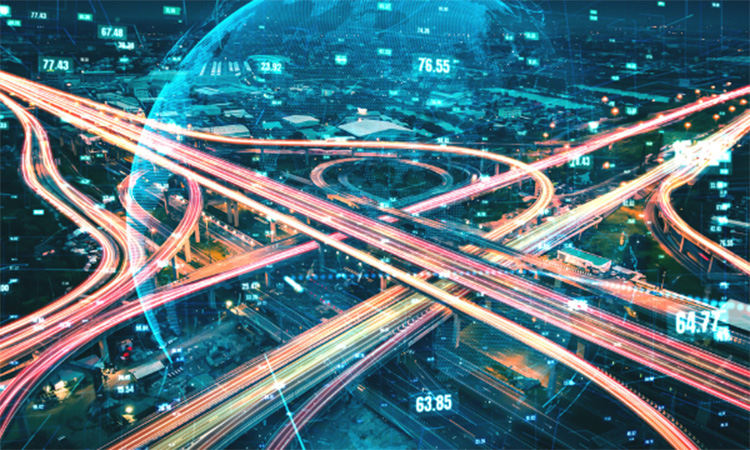Realising the power of the Internet of Things
- Like
- Digg
- Del
- Tumblr
- VKontakte
- Buffer
- Love This
- Odnoklassniki
- Meneame
- Blogger
- Amazon
- Yahoo Mail
- Gmail
- AOL
- Newsvine
- HackerNews
- Evernote
- MySpace
- Mail.ru
- Viadeo
- Line
- Comments
- Yummly
- SMS
- Viber
- Telegram
- Subscribe
- Skype
- Facebook Messenger
- Kakao
- LiveJournal
- Yammer
- Edgar
- Fintel
- Mix
- Instapaper
- Copy Link
Posted: 9 February 2023 | Paul Vaclik - Nomad Digital | No comments yet
Paul Vaclik, Head of R&D and Architecture at Nomad Digital, shares his thoughts on the value of the Internet of Things for public transport and its passengers, and considers what the future of IoT and improved connectivity may look like.


The Internet of Things is a key technology in enabling digital transformation. What are some of its applications within public transport?
The Internet of Things, also known as IoT, covers a wide range of technologies that all aim to turn passive devices into active, smart, data gathering devices which are aware of their environment and can share data about their state and their surroundings. Things that are internet connected and (to some extent) self-aware can notify maintenance staff that they need cleaning or servicing and can send alerts if they are operating at extreme temperatures or if their batteries or power supplies are failing. Sensors can help to build a detailed real-time model of the environment that passengers face by measuring factors such as temperature, humidity, air quality and overcrowding etc. All data provides a wealth of opportunities to allow operators to proactively fix issues before they impact the passenger experience or cause costly outages and service delays.
How can IoT and improved connectivity help to solve some of transport’s most significant challenges?
Everybody wants their experience of public transport to be safe, reliable and comfortable. Smart use of IoT can help in all of those areas.
Vehicles already incorporate many sensors which ensure that safety critical systems operate effectively and provide interlocks so that a train cannot move in an unsafe condition. Enhanced system data, combined with advanced algorithms can be used to predict when components are likely to need to be maintained or replaced. This kind of proactive, condition-based maintenance can help to minimise disruption from in-service failures and optimise the costs associated with taking trains out of service for repairs.
Does improved connectivity contribute to a more positive passenger experience? If so, how?
Whether passengers want to use their journey to relax and be entertained, to work, or just to get to their destination with as little fuss as possible, good connectivity plays a vital role. High speed data connections, plus onboard entertainment systems can deliver a rich library of up-to-date content to keep passengers entertained and informed, as well as allowing direct access to real-time services via the public internet. That same service can also deliver integrated journey information with real-time updates, aggregated from any number of sources so that the passenger has the best possible view and control over their entire journey.
What do you think the future of connectivity will look like, and will IoT be a part of it?
The demand for higher data rates shows no sign of slowing down as passengers expect to be able to access the same types of media and information services on a train as they are used to in their homes or offices. Rail connectivity solutions need to do far more than just move a large volume of data. End to end security, data integrity and reliability is becoming more and more important as connectivity is used to deliver far more than passenger internet traffic. As connectivity is used to deliver more real-time services, the latency of the connection (the amount of time it takes a message to be sent and to get a response) becomes as important as the volume of data that can be carried. Applications such as high-quality video conferencing and immersive virtual reality require low latency connections to work well. Connectivity which approaches the same quality as fibre broadband brings cloud delivered services onboard the train. When it comes to what lies ahead, the future offers as many opportunities as the internet can deliver, which as we have seen so far… is pretty much only limited by our imaginations!
Paid promotion supported by Nomad Digital.


Paul is an IT professional with over 30 years’ experience in project, programme and department management. His background in electronic engineering and extensive career in software design and development of data-driven systems puts him in an ideal position to deliver Nomad’s combination of hardware and software product offerings. He is trained in PRINCE2 and DSDM methodologies, so can work equally well in both waterfall and agile software development environments.
Related topics
IoT (Internet of Things), Passenger Experience
Related organisations
Nomad Digital








